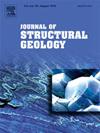Reactivation potential of inherited structures on southwestern Grand Banks, Newfoundland, Canada
IF 2.6
2区 地球科学
Q2 GEOSCIENCES, MULTIDISCIPLINARY
引用次数: 0
Abstract
The November 18, 1929, M 7.2 Grand Banks earthquake occurred in the Laurentian Channel near the crest of the continental slope off the eastern coast of Canada. This seismic event, followed by a tsunamigenic landslide, is the largest instrumentally recorded earthquake that has occurred in the region. The event led to 28 confirmed casualties and significant destruction of critical commercial infrastructure and operations, including trans-Atlantic telecommunications cables and coastal facilities serving communities in southern Newfoundland. Despite the significance of this event, there is a limited understanding of the structural setting and neotectonics of the region. Imaging deep structures where the earthquake likely occurred is challenging, but shallow rift-related structures, influenced by deeper faults through structural inheritance, offer valuable insights into this deeper system. Here, we apply this concept through the analysis and interpretation of key regional faults on two-dimensional offshore seismic reflection data. Then, using slip tendency analysis, the reactivation potential of these structures under the present-day stress field was calculated. The analysis shows that regional NW-SE-striking normal faults, dipping at 40°– 60°, have high slip tendency values, offering insights into potentially active fault locations and geometries that support seismic hazard assessment and earthquake scenario modeling to assess impacts on populations and assets in southern Newfoundland.
加拿大纽芬兰大浅滩西南部继承结构的活化潜力
1929年11月18日,7.2级大浅滩地震发生在加拿大东海岸大陆斜坡顶部附近的劳伦森海峡。这次地震伴随着海啸引发的山体滑坡,是该地区仪器记录到的最大地震。该事件导致28人确认伤亡,重要的商业基础设施和运营遭到严重破坏,包括跨大西洋电信电缆和为纽芬兰南部社区服务的沿海设施。尽管这一事件意义重大,但人们对该地区的构造背景和新构造的认识有限。对可能发生地震的深层构造进行成像是一项挑战,但受深层断层影响的浅层裂缝相关构造通过构造继承为这一深层系统提供了有价值的见解。在这里,我们通过对海上二维地震反射数据的关键区域断层的分析和解释来应用这一概念。然后,利用滑移趋势分析,计算了这些构造在现今应力场作用下的再激活电位。分析表明,在40°- 60°范围内,向北西-东向的正断层具有高滑动倾向值,这为潜在活动断层的位置和几何形状提供了见解,支持地震危险性评估和地震情景建模,以评估对纽芬兰南部人口和资产的影响。
本文章由计算机程序翻译,如有差异,请以英文原文为准。
求助全文
约1分钟内获得全文
求助全文
来源期刊

Journal of Structural Geology
地学-地球科学综合
CiteScore
6.00
自引率
19.40%
发文量
192
审稿时长
15.7 weeks
期刊介绍:
The Journal of Structural Geology publishes process-oriented investigations about structural geology using appropriate combinations of analog and digital field data, seismic reflection data, satellite-derived data, geometric analysis, kinematic analysis, laboratory experiments, computer visualizations, and analogue or numerical modelling on all scales. Contributions are encouraged to draw perspectives from rheology, rock mechanics, geophysics,metamorphism, sedimentology, petroleum geology, economic geology, geodynamics, planetary geology, tectonics and neotectonics to provide a more powerful understanding of deformation processes and systems. Given the visual nature of the discipline, supplementary materials that portray the data and analysis in 3-D or quasi 3-D manners, including the use of videos, and/or graphical abstracts can significantly strengthen the impact of contributions.
 求助内容:
求助内容: 应助结果提醒方式:
应助结果提醒方式:


